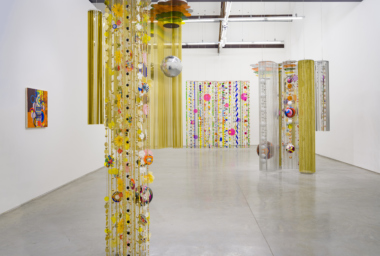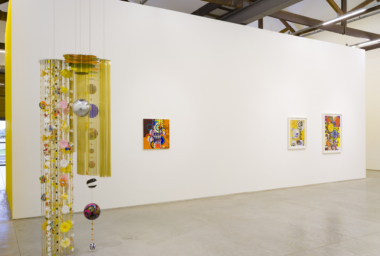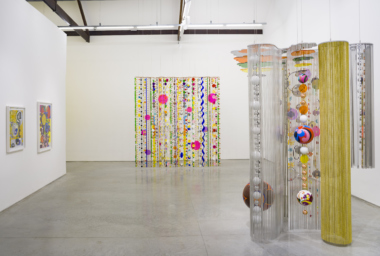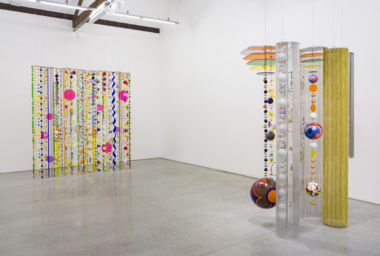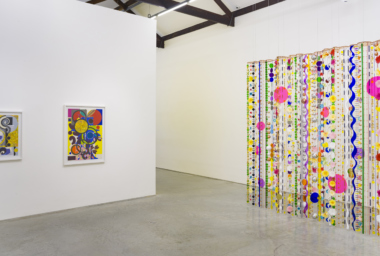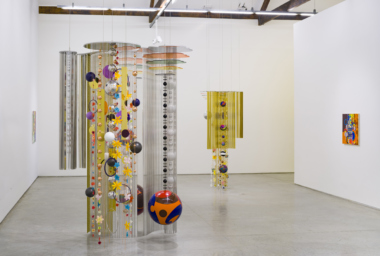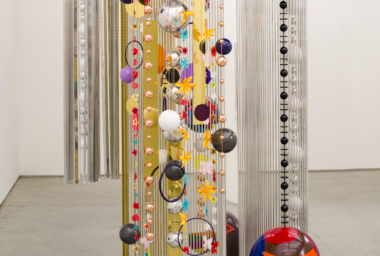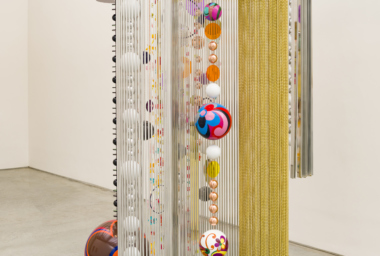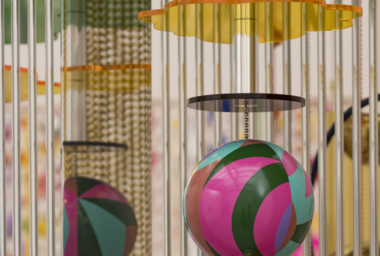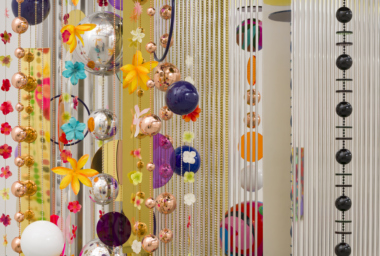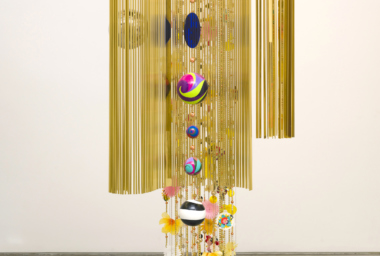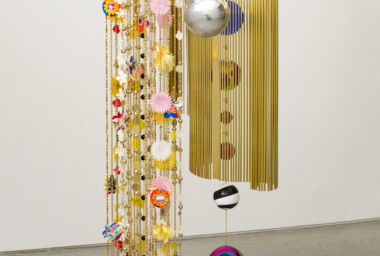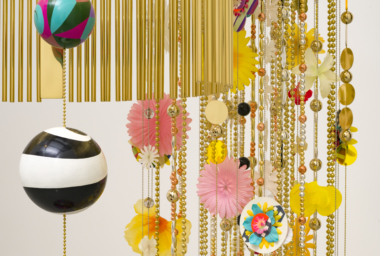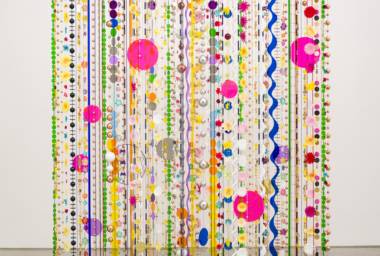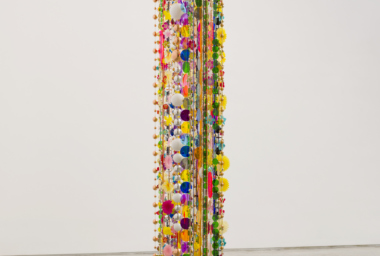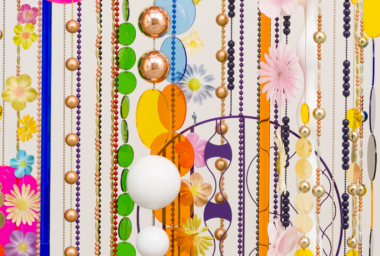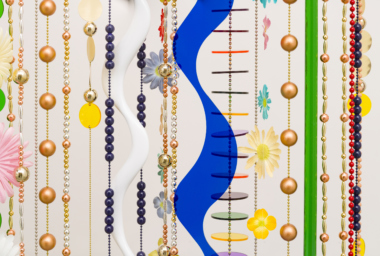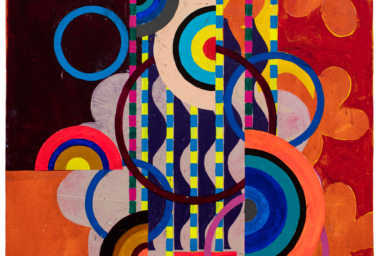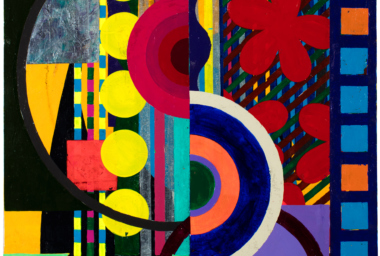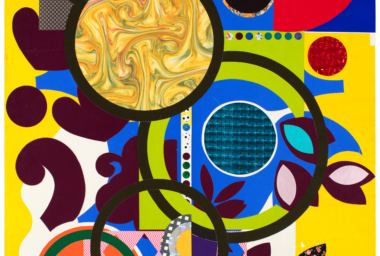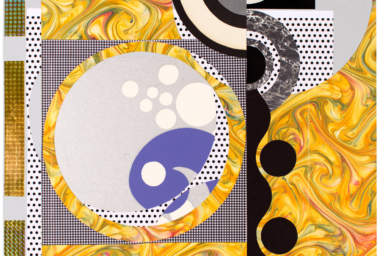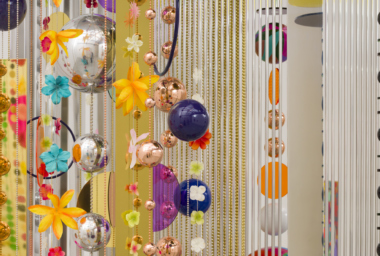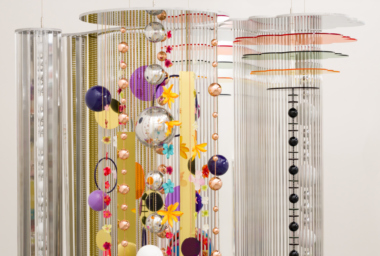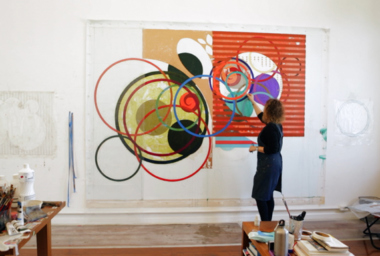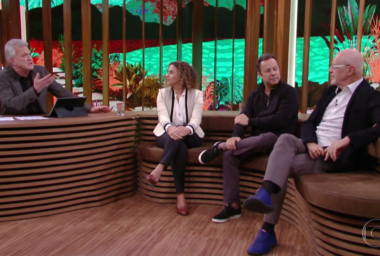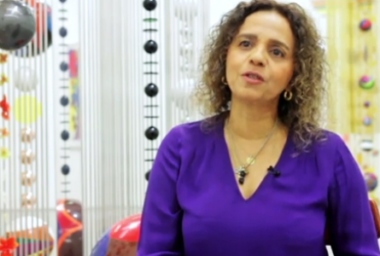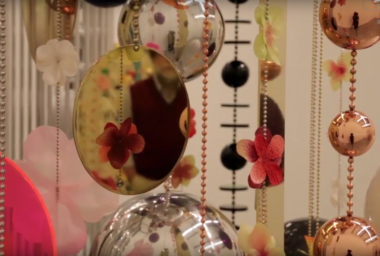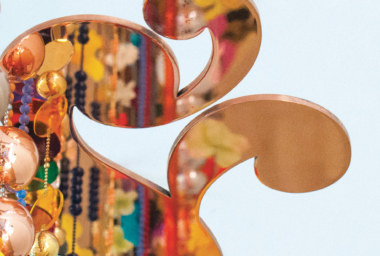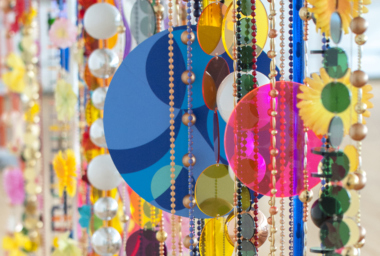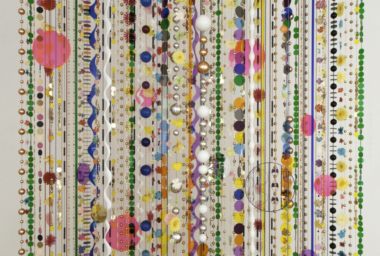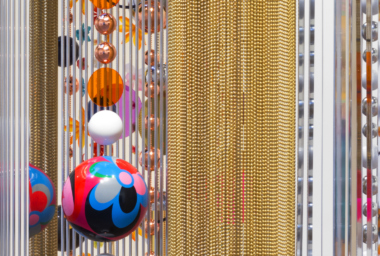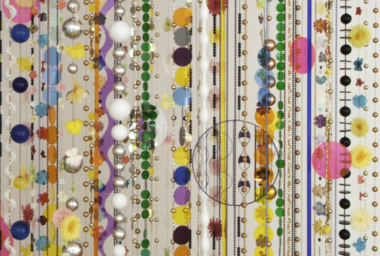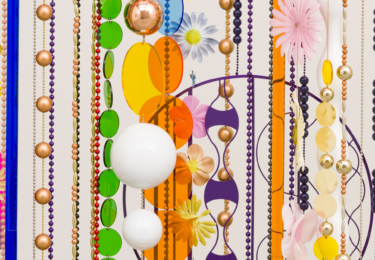
Beatriz Milhazes
Marola, Mariola and Marilola
May 20 – Jul 16, 2017
Opening
May 20, 2 pm–6 pm
Carpintaria
Rua Jardim Botânico 971,
Rio de Janeiro
Directions
Download
A painter par excellence, Beatriz Milhazes has recently come to investigate the possibilities and challenges of sculpture. The result of this process initiated in 2010 can be seen in the show Marola, Mariola and Marilola, as of May 20th, at Carpintaria, Fortes D’Aloia & Gabriel’s new space in Rio de Janeiro.
There are three large tri-dimensional pieces, whilst in harmony with her paintings, prints and collages, they propose a novel and riveting perceptive element. Her characteristic motifs – such as the circle, the flower and the arabesque – fill up the room, establishing a new type of corporeal, physical relationship among them. This relationship is also determined by precise intervals among the elements as well as by the viewer’s perspective. Depending on the angle the pieces are being observed, a different work emerges, as well as a concrete experience, in which the body of the sculpture is interrelated to that of the viewer’s. “This physical possibility represents an investigative area that painting does not offer”, she explains.
The three sculptures naming the show were conceived over five years of research – several life-size models were made – at Durham Press, a studio in Pennsylvania (US), where Beatriz has been developing her graphic production since 1996, concomitantly with her extensive work schedule and exhibitions. They are large pieces, ranging between 2.26 to 2.89 meters high, interacting differently with the space, either by enhancing the body of the work (the circumvolutions from Marola create a denser body in space, with breadth and thickness almost coinciding), or acting as a divider, such as Mariola which is less than half a meter thick, almost like a curtain. These pieces, albeit unknown in Brazil, have been displayed in galleries representing the artist in Paris and New York (James Cohan Gallery, NY, and Max Hetzler, Berlin/Paris).
The titles, as it usually occurs in Milhazes’ works, are interesting reading keys. Not only do they promote the connection among the pieces, but they also reaffirm the importance of rhythm, sonority and a Brazilian essence in her work. The first and largest of them, which according to the artist still presents a close connection with the concept of mobile, refers to ripples on the sea, to the notion of a constant and seductive movement.
Mariola, a popular sweet from Northeast Brazil, also echoes the vernacular culture so appreciated by the artist, whereas Marilola plays with sonority, a playful word game, a procedure resembling the spatial game she creates from the association of different materials and colors. In the three pieces, the body is devised from a design in metal, acting as a support for the different elements. In these compositions, there is logic similar to that of collage, clearly present in Milhazes’ paintings.
It all began with a stage setting Beatriz created for her sister’s dance show, the choreographer Márcia Milhazes, in 2004. By designing a type of chandelier for center stage, she abandoned the idea of working with panels, which had ruled her previous scenographic works, and takes on a tridimensional challenge that would become increasingly sharp.
The first result from this plunge into space was the series Gamboa (part of the exhibition held in Paço Imperial, Rio de Janeiro, four years ago), which the artist did not yet consider part of her sculptural world. “I do not believe Gamboa deals with volume, with the architectonic space, the physical”, she states. Another difference regarding the Gamboa experience is the material she used. While Gamboa poured over elements close to the carnival culture and popular festivities, in her more recent sculptures, Beatriz deliberately intended to work with more resistant elements, with attractive materials such as polished metals, acrylic and wood, transformed into support for pictorial interventions.
“I belong to the two-dimensional domain. My ideas and concepts are totally connected to the plane”, she says, explaining how difficult and thought-provoking this challenge was. “The greatest difficulty was to begin thinking in tri-dimensions”, she states. It is a process full of vicissitudes, in which she attempted “using my repertoire, to deepen, work vertically, evolving in the tri-dimension”. “It was almost an adventure”, Beatriz concludes. This semester she will have great part of her work assembled in a volume from the special series the German publishing house Taschen dedicates to major contemporary painters. This large format and limited edition book (signed by the artist) will be published in four languages: German, English, French and Portuguese. Beatriz will then be part of a selected group of celebrated artists, such as Jeff Koons, Cristopher Wool, Neo Rauch, Albert Ohelen, Darren Almond, Ai Weiwei and David Hockney.
Marola, Mariola and Marilola, which strengthens Carpintaria’s mission to promote and explore the dialogue between different media, can be seen until July 16.
Biography
Beatriz Milhazes graduated in Social Communication. She entered the School of Visual Arts at Parque Lage in 1980, where she studied until 1983. She taught painting until 1996. Milhazes is considered one the most important Brazilian artists. She consolidated her career in the national and international circuit of Fine Arts, participating in the biennials of Venice (2003), São Paulo (1998 and 2004) and Shanghai (2006), and in solo exhibitions in museums and prestigious institutions, such as Pinacoteca do Estado de São Paulo (2008); Fondation Cartier, Paris (2009), Fondation Beyeler, Basel (2011); Fundação Calouste Gulbenkian, Lisbon (2012); Museo de Arte Latinoamericano (Malba), Buenos Aires (2012); and recently, Paço Imperial, Rio de Janeiro (2013) and Pérez Art Museum, Miami, (2014/2015). Her works compose the collections of the Museum of Modern Art (MoMA), the Solomon R. Guggenheim Museum and the The Metropolitan Museum of Art (Met) in New York; the 21st Century Museum of Contemporary Art, in Japan; and the Museo Reina Sofia, in Madrid, among others. The artist lives and works in Rio de Janeiro.
